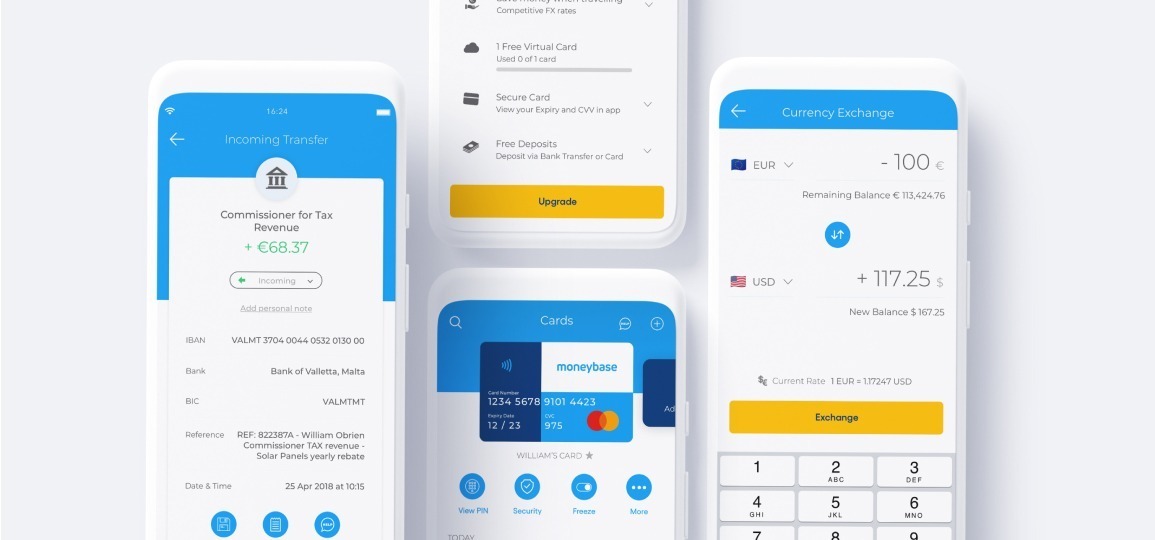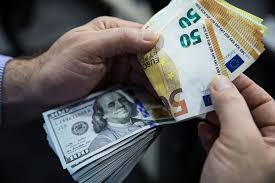When Snapchat landed on the social media map, many disregarded it as just another platform to share their day-to-day happenings. But there was something very unique about it that quickly placed it in the spotlight. Unlike the likes of Instagram, Twitter or Facebook, where posts would live indefinitely, Snapchat’s one-second snap or a 24-hour story meant that you had to actively be on the app to know what was going on, while this urgency preyed on users’ FOMO (fear of missing out). As more and more celebrities, ranging from Kylie Jenner to DJ Khaled and Blac Chyna posted stories and made the headlines, users refreshed their feeds over and over again just to keep up with their favourite stars, while getting hooked on it in the process.
In the age of timelines and permanence, Snapchat offered a fresh way of interacting with others and proved to be a big hit among young users. However, following a redesign dud, the brand started losing ground. After a roller coaster ride, Snap has made a strong comeback in 2020 amidst the COVID-19 pandemic, having enticed a swarm of millennials and Gen Zs. The company saw record growth last year and rising revenue, while its stock is up more than 56% for 2021. Now with strong institutional support and several Wall Street analysts upping their support for the stock, Snap is steadily piquing investors’ attention.

A brief history of Snap
The image and video messaging app which calls itself a camera company was founded in 2011 by Evan Spiegel, Bobby Murphy and Reggie Brown. The co-founders who met at Stanford University originally wanted to create an app that would send photos which would eventually disappear. The initial app was launched in the iOS App Store with little fanfare, but after a full year in operation, its users were sending approximately 20 million snaps per day, roughly 25 snaps per second and by 2014, the company caught on the attention of several big names and had to refuse offers of acquisitions from the likes of Mark Zuckerberg, Google and others.
With several rivals hot on its heels and all vying for attention in the social media space, competition has been tough, but Snap did not knuckle under. Constantly innovating, the company has launched several features along the years, making its product even more attractive. With Stories, Snapchat users could post a series of snaps that would remain active and viewable for 24 hours, while the Chat function allowed them to talk to each other in the chat window via a live video chat. On the other hand, Our Story enabled users located anywhere on the planet to post photos and videos from concerts, political rallies, sports games and other public events. The company also introduced Snapcash, a money transaction feature which allowed consumers to send and receive money from others and have it deposited straight into their bank account.
Just four years after its launch, Snapchat was a raving success, reaching 75 million users on a monthly basis, while ads were by now the norm, serving as a huge source of income. And with success, came the need to create a parent company and so in 2016, the firm was officially named Snap Inc. The same year, it unveiled its smart glasses that were called Spectacles.
The firm has also made a number of purchases, including software company AddLive, Vergence Labs and the mobile app Scan. Then, in 2015 it acquired Looksery to develop Lenses for its mobile app, a feature based on Loosery’s facial recognition software. The company also formed a joint venture with NBCUniversal to produce content for Snap’s platforms and in an attempt to push further its AI efforts, as recently as January of 2021, it acquired British startup Ariel AI, which was founded in 2018 by a group of former Google (GOOG / GOOGL) and Facebook (FB) research scientists. Prior to the acquisition Ariel AI had been focused on an area of the technology known as computer vision, which is used to build augmented reality features.
Today, by downloading the Snapchat app onto a smartphone, users have access to a wide range of features, while once a photo or video is taken, users can play around with it, manipulate and change the content as they please. And Snapchat has proven to also be valuable to businesses, as more and more companies have been using the app to leverage its wide audience, particularly millennials and Gen Zs. For instance, clothing company FarFetch (FTCH) uses Snap’s AR (augmented reality) technology so that consumers can virtually try on and shop a variety of jackets. On the other hand, Nike (NKE) has integrated the app’s technology as part of its Play New advertising campaign.
Fun fact
Snapchat’s first version was originally called Picaboo, until the founders were sent a cease-and-desist from another company who had already trademarked the Picaboo name.

When did Snap go public?
Snap began trading on the New York Stock Exchange (NYSE) on March 2, 2017 under ticker symbol SNAP. One of the hottest IPOs of 2017, Snap was the largest IPO of the year since Alibaba (BABA) went public in 2014 and the biggest tech company to go public since Facebook (FB). The stock began trading at $24 a share, a 40% increase over its previously proposed range of $14 to $16 a share, while it went as high as $26.05, before ending the day at $24.48, marking a gain of 44%.
The entire size of the offering - more than 200 million shares - changed hands over the course of the day, accounting for roughly 10% of the total volume of trading on the NYSE on the day. At the closing price, Snap had a market valuation of nearly $28.3 billion, while it was worth about three times as much as Twitter’s (TWTR) market cap at the time.
How much would an investment in Snap be worth?
Despite Snap’s strong debut, its stock got off to a lacklustre start on the public markets once the initial hype fizzled out, with shares trading as low as $4.82 in December 2018. But fortunately for investors, the stock has been on an upward trajectory ever since. In fact, while other companies were dealing with economic shutdowns and people around the world were sheltering at home, much of their entertainment came by way of social media.
Snap investors who purchased stocks one year ago and held on to them, would have generated a good return on their investment. In fact, $1,000 in Snap stock bought on May 3, 2020, would be worth about $3,322 on May 4, 2021.
Is Snap a buy?
Despite the havoc caused by the COVID-19 pandemic, Snap saw record growth last year, with annual revenue amounting close to $2.5 billion in 2020, up from $1.72 in the preceding year and as of the second quarter of 2021, Snap has generated $982 million in revenue, up from roughly $454 million generated in the first quarter of 2020. And when the firm posted results on July 23, it reported adjusted earnings of 10 cents, when analysts were expecting a loss of 1 cent on revenue of $845 million.
Since the start of the year, the stock is up more than 42%. In addition, institutional support is solid for the stock as it boasts eight consecutive quarters of increasing fund ownership. In fact, following its earnings report, more than seven Wall Street analysts raised their price target on the stock, ranging from $80 to $96.
But it wasn’t always this way. When Snapchat went public, critics claimed that it would struggle to justify its high valuation or narrow its losses and for a period of time, it appeared to be so. In late 2017, the stock slid below its IPO price and plunged even further in 2018. It then bounced back above its IPO price in early 2020, only to have the COVID-19 crash in March 2020 push it back down, below $10. Meanwhile, the company’s daily active users appeared to have stalled in 2018.
Snapchat reached 265 million daily active users in the fourth quarter of 2020 and Spotlight — its newly launched TikTok-like service — grew to 100 million daily active users in just a few months. In fact, this is also the fastest year-over-year growth rate the social media app has registered in over a year and all thanks to record growth in Snapchat users outside of the U.S. and Europe. Meanwhile, a whopping 90% of Gen Z in the U.S. watched Snap original content in the last month and the company projects 50% annual revenue growth for the next several years.

What’s next for Snap?
After years of stitching together a lengthy series of new products and services, the company is now breaking new ground in the AR field. In May 2021, it announced that it is launching AR glasses to let some content creators put digital creations into the world around them. Featuring a mix of computer graphics like 3D models overlaid on the real world, these glasses are an evolution from its AR ‘lenses’ on phones, which overlay art on a user taking a selfie or distort the live image in many different ways. More specifically, the glasses have two cameras, four microphones and stereo speakers, while they will be powered by a chip specifically tuned for AR and VR (virtual reality).
But the idea of smart glasses is not new to the company and it hasn’t always been plain sailing. In December 2014, it acquired Vergence Labs, the developers of the Epiphany Eyewear smart glasses. Then on September 24, 2016, the company unveiled its new product dubbed Spectacles, which were eventually sold through Snapbot, a propriety vending machine for smart glasses, which was located near the company’s headquarters. However, the company only managed to sell 220,000 pairs, which was less than initially expected.
Snap has invested heavily in AR and according to CEO Evan Spiegel, the company intends to double down on this strategy in 2021. For instance, the company has enabled more than 200 beauty brands to upload thousands of SKUs (stock keeping unit) to its camera and this combination of commerce, location and AR, together with the advertising possibilities, could be promising. Well on its way to differentiating itself with unique content and innovative experiences for its users, Snap may well be at the forefront of the shift towards AR.
How to invest in Snap (SNAP) stock with Moneybase Invest
Ready to buy a share in Snap (SNAP)? Your first step to tapping into a world of investment opportunities with Moneybase Invest is to sign up and open an account.
To do so:
- Download the app from either Google Play or the Apple App Store. Alternatively, you may access Moneybase Invest on your desktop by visiting https://live.cctrader.com/
- Once you’ve onboarded successfully and have funded your account, head over to the search bar at the top of your screen and input either the company name or ticker symbol.
- Select the instrument of your choice from the list and then click on the Buy button on the window located at the bottom of your screen.
- On the New Order page, input the number of shares you would like to purchase and hit the Place Buy Order. SNAP has been added to your portfolio.
Access over 20,000 Stocks, ETFs, Bonds & Funds and over 4,300 fractional US shares and ETFs on our award-winning platform, with no hidden fees and instant market execution.
Moneybase Invest is brought to you by Calamatta Cuschieri Investment Services Ltd and is licensed to conduct investment services business by the MFSA under the Investment Services Act.
Moneybase Invest offers direct market access and speed of execution and is intended for knowledgeable and experienced individuals taking their own investment decisions. The value of investments may go up and down and currency fluctuations may also affect investment performance.
The contents of this article are not intended to be taken as a personal recommendation to invest but strictly based on research and for information purposes only. Retail investors should contact their financial adviser for a suitability assessment prior to taking any investment decisions.






